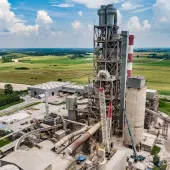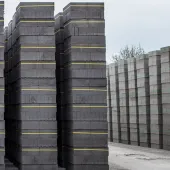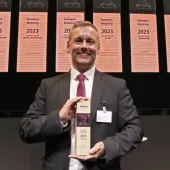CEMEX expand capacity of Somercotes facility
Significant investment further supports safe and sustainable rail mobility needs in the UK
CEMEX have completed a significant investment in their rail solutions facility at Somercotes, Derbyshire, to meet increasing demand from the rail sector for the company’s concrete bearers for switches and crossings.
As a result of this investment, Cemex say they will be able to manufacture an additional 18,000 linear metres of bearers for switches and crossings every year.
The improvements entailed the construction of a building which houses a new crane for moving products. The existing stressing frames were repositioned in this facility, allowing space in the main building for a new 50m twin-cell rail-bearer mould, as well as space for further expansion when needed.
As well as rail bearers, the new development can produce the heavily engineered, low-volume, complex sleepers that are required for key rail infrastructure projects. This will further allow Cemex to better facilitate the complex, bespoke characteristics of their rail solutions, while meeting the highest standards in terms of safety and sustainability.
The new Somercotes facility was officially opened by Cemex’s EMEA president Sergio Menendez during his recent visit to the UK.
Damien Allen, director of building products, precast and modular at CEMEX EMEA, commented: ‘The investment in our Somercotes site is crucial to ensure we can improve our service to our rail customers and continue to meet increasing demand for highly innovative rail infrastructure solutions, which support the development of safe and sustainable rail mobility.
‘We are now looking to expand the team to provide further support and are excited to see how we can grow this area of our business over the coming years.
‘It was a pleasure to welcome our regional president, Sergio Menendez, to Somercotes and give him the opportunity to officially open the new facility and meet the team, who have all worked so hard on the development.’










